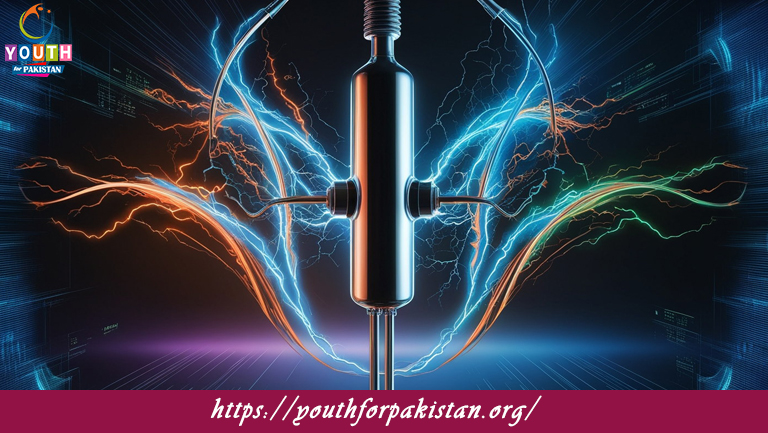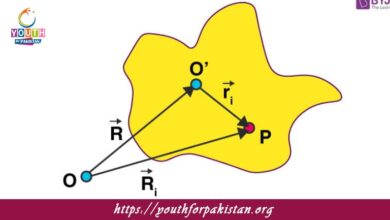Electrode Potential MDCAT MCQs with Answers

Welcome to the Electrode Potential MDCAT MCQs with Answers. In this post, we have shared Electrode Potential Multiple Choice Questions and Answers for PMC MDCAT 2024. Each question in MDCAT Chemistry offers a chance to enhance your knowledge regarding Electrode Potential MCQs in this MDCAT Online Test.
The electrode potential of a half-cell measures:
a) The total energy of the cell
b) The tendency of an electrode to gain or lose electrons
c) The concentration of reactants
d) The temperature of the solution
Standard electrode potential is measured under:
a) Standard temperature and pressure
b) Normal atmospheric conditions
c) Standard state conditions (1 M, 1 atm, 25°C)
d) Room temperature only
In the standard hydrogen electrode (SHE), the potential is defined as:
a) 0.34 V
b) 0.00 V
c) 1.00 V
d) -0.76 V
A positive electrode potential indicates that the electrode:
a) Tends to lose electrons
b) Tends to gain electrons
c) Has a high concentration of ions
d) Is at a high temperature
The Nernst equation is used to calculate:
a) Cell potential under non-standard conditions
b) The concentration of reactants
c) The temperature change
d) The rate of reaction
In a galvanic cell, the electrode where reduction occurs is called the:
a) Anode
b) Cathode
c) Salt bridge
d) Electrode potential
The electrode potential of a cell can be calculated using:
a) The cell’s standard potential and the Nernst equation
b) The temperature and pressure
c) The concentration of gases
d) The mass of the electrode
The relationship between the standard electrode potential and the Gibbs free energy change (ΔG) is given by:
a) ΔG = -nFE
b) ΔG = nFE
c) ΔG = -FE
d) ΔG = nF(E – E°)
In a concentration cell, the electrode potential depends on:
a) The temperature only
b) The concentration gradient between the two half-cells
c) The pressure of the gases
d) The size of the electrodes
A negative electrode potential indicates that the electrode:
a) Tends to gain electrons
b) Tends to lose electrons
c) Has a high temperature
d) Is in a non-aqueous solution
The standard electrode potential of a metal in a cell is determined by:
a) Its reactivity with acids
b) Its ability to conduct electricity
c) The tendency of the metal to gain or lose electrons
d) Its solubility in water
The electrode potential of a metal electrode in a solution is influenced by:
a) The temperature and pressure
b) The concentration of ions in the solution
c) The size of the metal ions
d) The color of the solution
If the cell potential of a galvanic cell is positive, the cell is:
a) At equilibrium
b) Not functioning
c) Spontaneous
d) Inactive
In a concentration cell, the electrode potential is directly proportional to:
a) The difference in electrode concentrations
b) The temperature of the cell
c) The volume of the solution
d) The pressure of the gas
The Nernst equation for a half-cell reaction is given by:
a) E = E° – (RT/nF) * ln(Q)
b) E = E° + (RT/nF) * ln(Q)
c) E = E° – (nF/RT) * ln(Q)
d) E = E° + (nF/RT) * ln(Q)
The standard electrode potential of a reaction is measured:
a) When the concentrations of all species are equal
b) When the electrode is immersed in a solution with a concentration of 0.1 M
c) When the temperature is 0°C
d) Under standard conditions of concentration (1 M), pressure (1 atm), and temperature (25°C)
In an electrochemical cell, the anode is where:
a) Reduction occurs
b) Oxidation occurs
c) The cell potential is measured
d) The reaction is spontaneous
The term “electrode potential” refers to:
a) The voltage of the entire cell
b) The potential difference between two electrodes
c) The potential difference between the electrode and the reference electrode
d) The voltage of the salt bridge
The electrode potential of a half-cell is influenced by:
a) The size of the electrode
b) The surface area of the electrode
c) The concentration of ions in the solution
d) The color of the electrode
The potential of a standard electrode is defined as:
a) 1 V
b) 0.34 V
c) 0.00 V
d) 1.00 V
The Gibbs free energy change (ΔG) and electrode potential (E) are related by:
a) ΔG = -nFE
b) ΔG = nFE
c) ΔG = FE
d) ΔG = -FE
In a galvanic cell, the direction of electron flow is from:
a) Anode to cathode
b) Cathode to anode
c) Salt bridge to electrode
d) Electrode to salt bridge
The standard electrode potential of a reaction can be used to determine:
a) The reaction rate
b) The equilibrium constant
c) The concentration of reactants
d) The temperature of the reaction
In a concentration cell, the electrode potential will be zero when:
a) The concentrations of both solutions are equal
b) The temperature is increased
c) The pressure is reduced
d) The volume of solutions is different
The Nernst equation incorporates the effect of:
a) Temperature on electrode potential
b) Pressure on electrode potential
c) Size of the electrode
d) Color of the solution
In the context of electrode potentials, “reduction potential” refers to:
a) The potential for reduction to occur at an electrode
b) The potential for oxidation to occur at an electrode
c) The temperature at which reduction occurs
d) The pH at which reduction occurs
The cell potential of a galvanic cell is calculated as:
a) The sum of the standard electrode potentials of the half-cells
b) The difference between the standard electrode potentials of the half-cells
c) The average of the standard electrode potentials of the half-cells
d) The product of the standard electrode potentials of the half-cells
The electrode potential of the standard hydrogen electrode (SHE) is defined as:
a) +0.34 V
b) +1.00 V
c) 0.00 V
d) -0.34 V
The effect of temperature on electrode potential can be described by:
a) The Arrhenius equation
b) The Van ‘t Hoff equation
c) The Nernst equation
d) The Gibbs free energy equation
In a galvanic cell, the cathode is where:
a) Oxidation occurs
b) Reduction occurs
c) The salt bridge is connected
d) The cell potential is measured
The electrode potential of a half-cell can be affected by:
a) The concentration of the solution
b) The color of the electrode
c) The shape of the electrode
d) The size of the electrode
The electrode potential of a reaction in a cell can be measured using:
a) A voltmeter
b) A thermometer
c) A barometer
d) A pH meter
The standard electrode potential of a reaction indicates:
a) The reaction rate
b) The tendency of the reaction to proceed
c) The equilibrium constant
d) The temperature of the reaction
In a galvanic cell, the role of the salt bridge is to:
a) Connect the two half-cells and complete the circuit
b) Supply electrons to the half-cells
c) Measure the cell potential
d) Control the temperature
The electrode potential of a half-cell is a measure of its:
a) Ability to gain or lose electrons
b) Size and shape
c) Solubility in water
d) Reaction rate
When calculating the electrode potential using the Nernst equation,
Q represents:
a) The reaction quotient
b) The cell charge
c) The quantity of reactants
d) The concentration of products
The standard electrode potential for a half-cell reaction is:
a) The potential measured at non-standard conditions
b) The potential under standard conditions
c) The potential after applying a correction factor
d) The potential after mixing different solutions
If you are interested to enhance your knowledge regarding Physics, Chemistry, Computer, and Biology please click on the link of each category, you will be redirected to dedicated website for each category.





